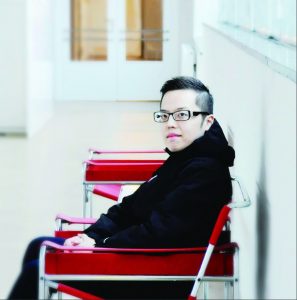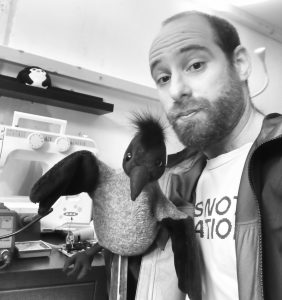AALTO CREATIVITY SYMPOSIUM 2021 |
|
Aalto Creativity Symposium is a meeting point for scholars and practitioners, which will take place at Vaasa this coming Friday and Saturday, September 10th – 11th, both on-site and online. Do you become more creative if you study creativity? This creativity symposium discusses creativity and creativity theories and invites you who wants to understand more about the science of creativity, whether you are a student, scientist, teacher, entrepreneur, a leader in an organization, an artist, work in the field of psychology or else interested in creativity. Creativity is a competence needed in times of change. We use our inherent creativity when solving problems, working in teams, or creating art or new products or strategies. Creativity theories submerge under the surface and make our tacit knowledge of creativity visible. International keynote speakers and national presenters talk about various aspects of creativity: imagination, chaos, the creative process, and more. The topics are not domain specific but aim to shed light on the fundamental principles of creativity. Read more about keynote and featured speakers here. The symposium is organized by a Team in The Department of Film, Television and Scenography ELO in Aalto University School of Arts, Design and Architecture:
REGISTRATIONRegister here. Online registration is free for Aalto people! For non-Aalto participants the online registration fee is €40. On-site participation €80. On-site registration fee includes coffee, tea, fruit, and snacks. Self-pay lunch in the restaurant (pre-orders will be sent to participants). Please note that due to pandemic restrictions the number of on-site participants is limited, and thus the on-site registration might already be full. VENUEOn-site venue is located in Sulva (15 km from Vaasa). Online in Zoom (link will be sent to registered participants). International and national participants are warmly welcome! The sessions will be recorded and can be viewed by participants for two weeks after the event. PROGRAM AND SCHEDULE FRIDAY – September 10th 13:00 – Lunch & registration 14:30 – Welcome & Definition and Aspects of Creativity (Elisabeth Morney, chair) 14:40 – Radical Creativity – What is it? The strategy of Aalto University (Tuomas Auvinen, Dean of School of Arts, Design and Architecture, Aalto University) 15:00 – Keynote: Intelligence, Creativity and Skill (Bonnie Cramond, Professor Emerita, University of Georgia, USA) 16:00 – Break (coffee) 16:20 – Imagination as a Source for Creativity (Hannah Kaihovirta, Docent, Senior researcher, University of Helsinki) 16:45 – Creative Thinking: Idea, Process and End Result (Riikka Mäkikoskela, Head of Radical Creativity, Aalto University) 17:10 – Improvisational Theater, Flow and Group Dynamic (Mikael Rejström, Actor & Creative Director, Stella Polaris) 17:30 – Marketing in an Equitable World (Dee Fretwell, Instructor, School of Business, Southern Oregon University, USA) 17:50 – Break (coffee) 18:00 – Keynote: Chaos, Complexity, and Creativity (Ruth Richards, Distinguished Professor of Psychology, Saybrook University, California, USA) 19:00 – Closing words for the day 19:15 – Symposium dinner SATURDAY – September 11th 9:30 – Welcome to symposium day two (Hannah Kaihovirta) 9:40 – Quality, Taste and the Creative Product (Elisabeth Morney, Aalto University) 10:00 – The Movement between Intuition and Evidence in the Creative Design Process (Kirsi Manninen, Aalto University) 10:20 – Break (coffee) 10:30 – Limitation as a Creative Resource (Kirsi Reinola, Aalto University) 10:50 – Ethical Aspects of Creativity (Marjaana Rantama, Aalto University) 11:10 – Break 11:20 – What is Creativity? Perceptions of primary school children in Malta. (Dr. Margaret Mangion, Senior lecturer, University of Malta, The Edward de Bono Institute for Creative Thinking and Innovation, Malta) 11:40 – The Role of Creativity in Interdisciplinary Work Groups in Higher Education Context (Dr. Daniela Bauer, Nuremberg Tech, LEONARDO – Centre for Creativity and Innovation, Germany) 12:00 – Lunch 13:00 – Keynote: Assessment of Creativity (Bonnie Cramond, Professor Emerita, University of Georgia, USA) 14:00 – Break (coffee) 14:15 – Round table: Do you become more creative by studying creativity? (Elisabeth Morney (chair), Bonnie Cramond, Hannah Kaihovirta, Riikka Mäkikoskela) 14:50 – Wrap up, final words 15:00 – End |
Category Archives: Creative Technology
NEW MEDIA DOCTORAL SEMINAR – Thursday, 18 March 2021, 16:30 – 19:30
Welcome to the third New Media Doctoral Seminar of 2021! The seminar will be held virtually on Zoom on Thursday 18th March from 16:30 to 19:30 (GMT + 02.00, Helsinki, EEST).
Mediated by Professor Lily Díaz-Kommonen, there will be two extremely interesting presentations with a Q&A discussion taking place afterwards.
Presentations are open for everyone, welcome!
PRESENTATIONS
‘Weaponized memes in China: Multimodal discourse analysis of the visual rhetorical appeals of Chinese political memes’
by Ningfeng Zhang
ABSTRACT
This study aims to apply multimodal discourse analysis as a theoretical point of entry to define the taxonomy of different rhetorical appeals of political memes in China’s most popular mobile application Wechat. The study views “internet memes” as a form of visual rhetoric, planning to analyze them respectively from representational, compositional, and interpersonal perspectives. The material consists of 357 internet memes posted on Wechat and collected by 10 active Chinese Wechat users in China during July 2019 – January 2021, their referential contents covered a series of social and political events occurring in China, including the Hongkong protest, the outbreak of Covid-19, the Sino-West relationship during the pandemic period and so on. Multimodal discourse analysis was applied to understand the visual contents, compositional forms, and visual arguments formed communicated via those memes, and ultimately concludes the different visual rhetorical appeals reflected in them. It is both a methodological and theoretical attempt to expand the understanding of the visual rhetorical study and how political memes function in the participatory media culture within a specific social, cultural, and political context.
BIO
Ningfeng Zhang is a doctoral candidate currently working as a new media researcher with Prof. Dr. Lily Díaz -Kommonen. His research interest focuses on the social, cultural, and political relevance and the generation mechanism of internet memes in the context of Chinese media environment, exploring the mechanism of how internet memes, as a form of visual rhetoric, a propaganda entity, as well as a facet of citizen journalism, generate, mutate and proliferate in a highly homogeneous media environment.
‘Intergroup Contact via Telerobtic Puppetry’
by Avner Peled
ABSTRACT
Following the premise of Intergroup Contact, established by Gordon Allport in the 1954 publication The Nature of Prejudice, I am investigating forms of communication that can reduce prejudice between groups in conflict and improve intergroup relations. Technological mediation supports contact in violent conflict scenarios where organizing face-to-face contact is challenging, even more so in light of the COVID-19 pandemic. Online contact forms suffer from a lack of agency, a limited set of nonverbal cues, and an impaired turn-taking flow. Virtual Reality supports user engagement but enforces a mind-body split and a dissociation from terrestrial grounds. I, therefore, propose remote-controlled robots (telerobots) as a way to add corporeal depth to mediated contact, situating a midpoint between online communication and a face-to-face meeting. For this research, the chosen form of implementation for intergroup contact is Telerobtic Puppetry. Puppetry (as well as virtual presence) evokes a hybrid state between object and subject, puppet and puppeteer. A hybrid object absorbs prejudice and problematizes it. Deindividuation of the puppet-avatar turns into a performance of group identities and categorization; a lack of signification opens up a path for self-expression. Design-based research and user surveying are now underway toward a telerobotic, textile-based puppet theater workshop and public performance event that occurs in two locations simultaneously.
BIO
Avner Peled is a creative technologist and media artist with a background in computer science, neurobiology, and philosophy. Currently, as Doctoral Researcher at Aalto Media Lab, Avner is exploring the use of telepresence robots as mediators for intergroup contact and conflict resolution in Israel and Palestine. He is also developing 3D web visualizations of big data for the New York Times.
The research is supported by the Kone Foundation.



